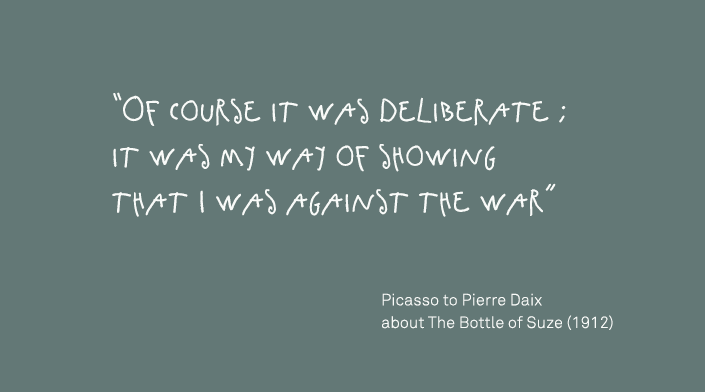Political views and anti-academism of Cubist Art
In his youth, Picasso witnessed the consequences of the Spanish defeat in America, which led to the loss of Cuba and the outrage of a young generation that turned to anarchy. War-related themes were recurrent in his drawings, such as those related to the Boer War, widely covered in the Spanish press. Soon afterwards, the artist was actively involved in the Modernist movement in Barcelona, with ties to anarchy and Catalan separatism, particularly among the circles that gathered at Els Quatre Gats cabaret (1897-1903).
While staying in Paris in 1900, Picasso began searching for a culture in keeping with his ideas. Through his contacts with the Catalans living in the city, he met two nonconformist writers, Guillaume Apollinaire and André Salmon. In early 1901, in Madrid and jointly with the Catalan writer Francisco de Assis, he started up the magazine Arte Joven, which focused primarily on ideas rooted in anarchism. After returning to Paris in 1901, he was under surveillance; one of police reports even mentioned that "there is reason to consider him an anarchist, given his relations."[1] Picasso's political views found an outlet in the anti-academicism of Cubist art. We see that his collages from that period included newspaper clippings about political rallies. Pierre Daix asked the artist what he intended by including an article from November 1912 about an anti-war demonstration in his piece La Bouteille de Suze (1912)[2]: "Of course it was deliberate [¼]; it was my way of showing that I was against the war." He also responded with the following quip to Daix's objection to the piece not yet having been shown: "Well, I knew that people would find it later on and understand."[3]
[1] Pierre Daix and Armand Israël, Pablo Picasso, Dossier de la Préfecture de police 1901-1940, Editions Acatos, 2003.
[2] Kemper Art Museum, Washington University in St. Louis, United States.
[3] Quoted by William Rubin, Picasso and Braque: A symposium, New York, MoMA and Harry N. Abrams, 1992, p. 76.






 Summary
Summary